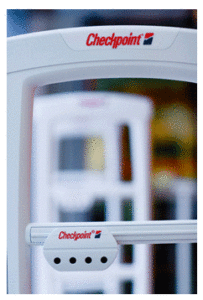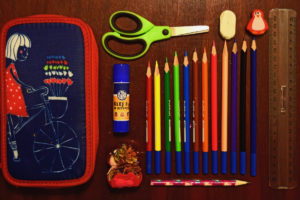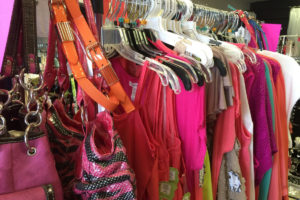Protecting clothing against theft is too important for stores to resort to the use of imposter clothing security tags. They say imitation is the sincerest form of flattery. In some instances I would agree. I would use parody music as one example where this is the case. I like to listen to music by Weird Al Yankovic and a parody band called Apologetix. Both musical groups take original music by major music talents and change the words to create parodies. They sound a LOT like the originals and in the case of Weird Al, he has even created music videos that spoofed the song and the video that went with it, for example the song and video “Eat It”. Sometimes the parody even has a message that the group wants their audience to hear but uses humor to do so. Merchandise protection can be similar in that there are companies that make security tags that look like or seem to act like Checkpoint tags but the devices are inferior to those of Checkpoint. Going cheaper can cost more in the long- run and that is why the CEO of Loss Prevention Systems Inc. Bill Bregar wants retail owners to use proven electronic article surveillance technology. Checkpoint tags provide consistency in the prevention of shoplifting and employee theft.
Checkpoint tags for clothing security come in a hard tag design that is built to prevent a criminal from pulling it off an item. The tags have two components, a piece with a pin and the pin cap. When attached to a garment they are clipped so closely together that there is almost no space created. This seamless connection makes prying the pieces apart impossible without tearing or ripping material. Since torn merchandise is not what a shoplifter wants they tend to stay away from products with clothing security tags attached to them. Checkpoint tags also stop shoplifters through the electronic article surveillance (EAS) protection built into the devices. The tags have a radio frequency signal transmitting from them. When merchandise with tags on them get into the range of EAS pedestals or an overhead Checkpoint system an alarm is activated. This alarm elicits an immediate response from nearby employees who are able to resolve issues and get unpaid goods and products back.
If what I call imitation tags can deter theft why not purchase them instead of the Checkpoint brand? Let me ask you this question, if an imposter is always as good as an original why would you ever buy a name brand product? I can go into my favorite grocery store and I can get a great deal on a store brand of soft drink. I may only pay 78 cents for a 2-liter bottle of store brand cola. I have the option of paying $1.99 for a 2-liter bottle of a nationally known brand. Why would I ever pay $1.21 more for that national brand? I would do so because the national brand is a much better quality. I KNOW the national brand will have a consistent quality and taste. Sometimes the store brand varies a bit in flavor and is not always the same in taste each time. I can’t trust the quality. The same can be said for your merchandise protection. Some other tags can be tampered with much more easily that the Checkpoint brand. The Checkpoint brand can also be depended on to alarm properly when it is near a tower or pedestal. Use another company’s clothing security tags and you may soon see your shrinkage increase as shoplifters find the vulnerability in your strategy.
I have used Checkpoint tags as a Loss prevention Manager and I know that they work. I trusted them and made sure they were a key component of my merchandise protection plans. The results spoke for themselves and only twice during my career did I see shortage climb slightly over 1%. I have also walked into stores and observed other devices being used and found myself scratching my head. What in the world was the store management thinking? Their tags looked like poor imitations of the tags I used. Spoofs are light-hearted imitations that bring fun and enjoyment as they parody a serious craft. In entertainment that is fine but it is another thing when it is your profits that are on the line. Don’t take clothing security lightly use products that are proven to be effective and stop shoplifting and theft in your stores.
Need information on Checkpoint tags? Contact us or call 1.770.426.0547 today.
 Shoplifters seem to be getting bolder than ever. Much of this is greed. Many people simply want stuff and have no moral compass. Others are emboldened by lax law enforcement or Politicians that pass laws that do little to protect you. Whatever the case be, it has a negative impact on Retailers. We are expected to open our stores, compete, pay employees, pay expenses, taxes…. And make a profit. Shoplifting theft is yet another pressure on us.
Shoplifters seem to be getting bolder than ever. Much of this is greed. Many people simply want stuff and have no moral compass. Others are emboldened by lax law enforcement or Politicians that pass laws that do little to protect you. Whatever the case be, it has a negative impact on Retailers. We are expected to open our stores, compete, pay employees, pay expenses, taxes…. And make a profit. Shoplifting theft is yet another pressure on us. It is hard to believe but summer is almost here! What are you doing about it? As crazy as the question may sound there is a reason I ask. What are you doing that will be different than what you did last summer? Do you know what it was you did to inspire additional sales last year? Maybe you didn’t do anything at all differently. Maybe you added a new piece of summer merchandise to your merchandising strategy. How did that item do in sales? Was it a blockbuster for you? On a similar note, how was the customer foot traffic in your store? Did you see an increase in the number of patrons last summer over the rest of the year? If you aren’t asking the questions then you are probably flying by the seat of your pants and that is not going to be beneficial to you at all. Sales tracking and Customer Counting can assist you in exponentially growing your sales.
It is hard to believe but summer is almost here! What are you doing about it? As crazy as the question may sound there is a reason I ask. What are you doing that will be different than what you did last summer? Do you know what it was you did to inspire additional sales last year? Maybe you didn’t do anything at all differently. Maybe you added a new piece of summer merchandise to your merchandising strategy. How did that item do in sales? Was it a blockbuster for you? On a similar note, how was the customer foot traffic in your store? Did you see an increase in the number of patrons last summer over the rest of the year? If you aren’t asking the questions then you are probably flying by the seat of your pants and that is not going to be beneficial to you at all. Sales tracking and Customer Counting can assist you in exponentially growing your sales. Summertime is here and now is the time for children to rejoice and shout for glee as most are finishing up their school year. Put away the pens and paper and lunchboxes and prepare to enjoy the warm, sunny days. No Mr. and Ms. Retailer, not YOU, the children. The moment the schools let out is the moment you should be preparing to roll out the merchandise for the next school year. Wait too long and you will be a step or two behind your competition.
Summertime is here and now is the time for children to rejoice and shout for glee as most are finishing up their school year. Put away the pens and paper and lunchboxes and prepare to enjoy the warm, sunny days. No Mr. and Ms. Retailer, not YOU, the children. The moment the schools let out is the moment you should be preparing to roll out the merchandise for the next school year. Wait too long and you will be a step or two behind your competition. Some people in retail look forward to it and some dread it. What am I talking about? Inventory! From the planning stages and meetings with the inventory counting team to the actual inventory day it can all be a lot to accomplish even for the best of planners. But what happens when you get through the actual counting phase? What comes next? You wait for the results. You may get preliminary results immediately but for larger stores booked inventory may take several weeks and they have teams to analyze the results. As a small retailer you may have to analyze the reports yourself but do you really understand what you are looking for? Are your results accurate? Stores have to keep track of what they have on hand and owners need to know where shortage has taken place and how it has happened.
Some people in retail look forward to it and some dread it. What am I talking about? Inventory! From the planning stages and meetings with the inventory counting team to the actual inventory day it can all be a lot to accomplish even for the best of planners. But what happens when you get through the actual counting phase? What comes next? You wait for the results. You may get preliminary results immediately but for larger stores booked inventory may take several weeks and they have teams to analyze the results. As a small retailer you may have to analyze the reports yourself but do you really understand what you are looking for? Are your results accurate? Stores have to keep track of what they have on hand and owners need to know where shortage has taken place and how it has happened.